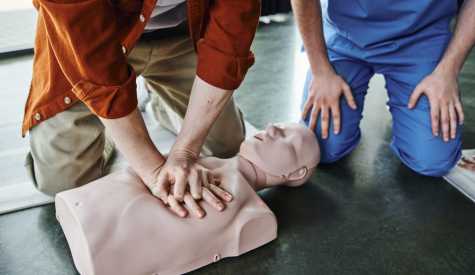How to Take Payment for Your CPR Class

There are a variety of ways to take payment for CPR, AED and First Aid classes. It's up to you — as the Instructor or Training Center — to determine the best payment method for your business and to determine when payment will be due.
Be sure to clearly communicate your payment policy to your students in order to expedite the payment process and prevent unknowingly providing your services without receiving payment.
Consider providing your students with a few different ways to take payments, which may include a mixture of technology-based and traditional methods of payments. Here are several methods our Instructors and Training Centers are currently using for payment transactions.
TECHNOLOGY-BASED PAYMENTS
Technology can make taking payments more convenient for your customers and more efficient for your CPR business. Popular payment services include:
- Integrated Payments. Some accounting software programs, such as QuickBooks, have credit card and bank payments integrated into their invoicing features. Explore your accounting software to determine your options.
- Square. Square allows you to take credit card payments anywhere. It offers several ways to use your smartphone, tablet or computer to complete the transaction.
- PayPal. You can request payment from customers or have them proactively send payment via PayPal. No additional equipment is required. You can also take credit card payments in person by using their card reader. Contact PayPal to find out how to accept credit card payments.
- Apple Pay. Apple Pay allows you and your customers to use your Apple devices to send and receive money. Payments can be sent directly through messages. You can also purchase a payment terminal that accepts contactless payments. To complete a transaction, customers simply waive their Apple devices over the terminal.
- Google Pay. Google Pay allows Android and Google Account users to quickly send and request money. It also has easy integration for business websites and the option to provide contactless payments with a compatible payment terminal.
- Venmo. Venmo allows business customers to pay the same way they pay their friends, with options for payments within the app, online or in person.
- Zelle. With Zelle, you can send, request and receive money directly between your customer’s bank account and your own. Your student must be enrolled with Zelle in their banking app to use this service. And your bank or credit union must offer Zelle for your business account type.
Note that these payment services may require a standard transaction fee or additional equipment, so do your research to determine which option is the best fit for your needs.
TRADITIONAL PAYMENTS
Many Instructors teach on a limited basis and prefer to stick with traditional forms of payment. But these types of transactions do not automatically produce a record of the transaction. So, you’ll need to provide a receipt to the customer and maintain transaction records for your business.
A receipt book can be purchased for less than $10, allowing you to handwrite a receipt for each of your customers. This can be time-consuming during class, but it’ll make financial reporting more efficient when tax season rolls around.
Here are some things to consider when using traditional forms of payment.
- Cash is an easy, reliable form of payment that is collected at time of service. There’s no need to worry about technology glitches or transaction fees. However, you’ll need to carry additional cash on hand in case you need to make change for a customer. Keep in mind that carrying and collecting cash may increase the risk of theft.
- Payment by check is more common when providing CPR classes to businesses. However, some individuals may request to pay by check. Be cautious when accepting personal checks for payment. There is a risk of the check bouncing for insufficient funds or the customer stopping payment after the transaction.
As your business grows, it is important to re-evaluate your payment methods to ensure you’re meeting your students’ needs and to help make financial recordkeeping easier.


